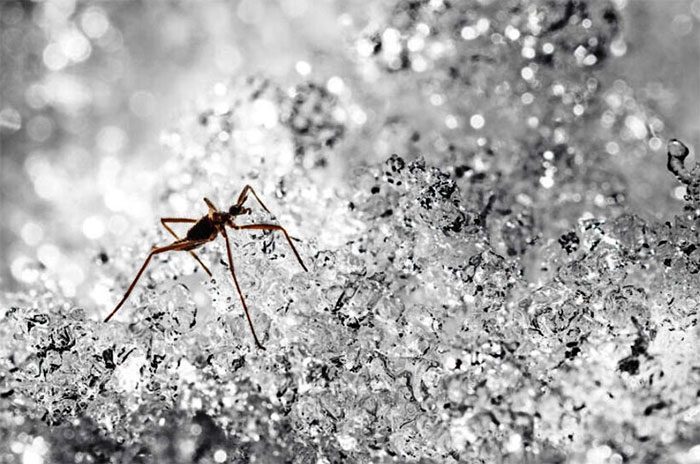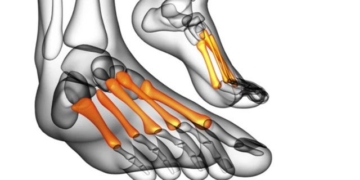The snow fly has evolved to self-amputate its legs for survival in freezing environments. This is a new discovery by American scientists.
A few years ago, John Tuthill, a neuroscientist at the University of Washington in Seattle, encountered a black object moving on the snow while he was jogging along a trail in the Cascade Mountains of Washington state. This strange object was about the size of a blueberry, had a long body, and moved with six legs in a very “ethereal” manner.
Tuthill was amazed to witness an insect in the freezing weather of November. Later, he learned that it was a Chionea fly. Also known as snow flies, they can operate in environments with temperatures much lower than most other insects.

When a leg begins to freeze, snow flies can quickly self-amputate that part.
Now, Tuthill and his colleagues have demonstrated that a frightening method allows snow flies to survive in subzero conditions. When a leg starts to freeze, they can swiftly eliminate that part, preventing ice crystals from invading their bodies.
“Snow flies are a wingless fly species, relatives of the flies we commonly see indoors,” Tuthill noted. This insect can live up to two months and is indeed challenging to study: “they cannot be bred in the lab, and it’s also very hard to catch them in the wild.” Snow flies can inhabit high-altitude areas that are difficult for humans to access, and they also face threats from avalanches.
Tuthill’s team used a thermal camera to record 77 snow flies as they moved across cooled surfaces. They continued to move even when their body temperature dropped below the average of -7°C, according to findings. However, more than half of the snow flies had amputated a leg at least once during the experiment.
A keen-eyed research assistant, Dominic Golding, noticed a sudden spike in temperature in the legs of the snow flies just before they fell off. This is a sign of ice formation, Tuthill explained. Liquid water releases heat as crystals form into ice. The nerve cells in the legs can sense this temperature change and trigger a self-amputation response, preventing ice crystals from spreading. The snow flies “have about half a second to cut off their legs before ice crystals spread throughout their bodies and freeze all internal organs,” he stated.
Moreover, the legs of snow flies do not fall off even when researchers tried to pull them hard – they only respond when exposed to sudden low temperatures.
“What’s fascinating about snow flies is that they really don’t follow any method,” shared Marshall, who provided feedback on the research team’s draft. They allow ice crystals to form in their legs and “self-amputate to remove it, which is really strange to me.”
The research team found that the snow flies that amputated their legs had a better chance of surviving more than a minute longer than those that did not. While that time may not seem like much, in the wild, when night falls, temperatures drop, and swarms of insects are “frantically searching for shelter,” it could mean the difference between life and death.


















































